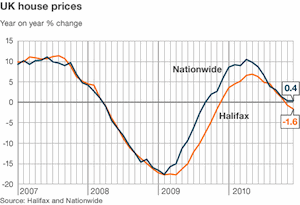Tracking error is often cited as a key factor in tracker fund selection. Tracking error is to tracker funds as goal tally is to a Premiership striker – a fundamental measure of how well the job is being done.
A tracker’s role is to deliver the returns of its benchmark index. In an ideal world, if the FTSE All-Share index returns 10% a year, then a FTSE All-Share tracker will also return 10%. But the world is rarely perfect (mine isn’t anyway), and tracking error shows just how wide of the (bench) mark the performance is.
That’s important information for passive investors because it can reveal the hidden cost of owning a tracker. There’s no point choosing a fund with a Total Expense Ratio (TER) 0.2% cheaper than its rivals, if its returns consistently lag the same benchmark by an extra 0.5%.
What exactly is tracking error?
Like so many investing terms, there are many different versions of tracking error and ways of calculating it. It’s therefore often difficult to be sure that two different sources are talking about the same measure.
That said, a reasonably common definition of tracking error is:
Tracking error = the standard deviation of returns relative to the returns of the index.
The lower the tracking error, the more faithfully the fund is matching its index.
When comparing funds, choose the lowest tracking error possible. A tracking error above 2% indicates the fund is doing a bad job.
What causes tracking error?
An index tracker is like an impressionist. It mimics its benchmark but can never quite be a dead ringer, chiefly because of:
- Costs
Index returns aren’t dragged down by operating expenses, but tracker fund returns are. Therefore you’d always expect a fund to lag its benchmark by at least its TER. The TER is deducted from the fund’s net asset value (NAV) on a daily basis, so the lower the TER, the lower the tracking error, and the better the expected fund return, all things being equal.
- Replication
Full replication funds that hold every stock in their index should offer zero tracking error as they are the index. (Except that transactions costs incurred when rebalancing ruin the beautiful dream).
Partial replication funds that sample a portion of their benchmark’s securities (because the cost of holding them all is too high) will inevitably generate tracking error, being only a representation of the index rather than a perfect clone.
Synthetic funds use swap-based contracts to guarantee they match their indices’ performance. But the swap fees and collateral costs incurred by the contracts drag down fund performance against the benchmark.
Taxes and transaction costs like brokerage fees and trading spreads add to our tracking error woes, no matter which replication model is used.
- Turnover
The more trades a fund makes, the greater the trading costs, which ultimately undermines performance and adds to tracking error.
- Management experience
Although index funds are popularly thought to be so simple that they can be run by VIC-20 computers, better management can rein in tracking error. Look for funds with a long record of tight tracking error.
- Enhancements
This one actually works in our favour. Funds can earn extra revenue that closes the performance gap (or even turns it positive). Typically this income comes from two sources:
- Fees earned by lending out fund securities to short-sellers.
- Dividend enhancement – lending out securities to tax-benign territories when dividends pay out.
Now what?
So that’s tracking error in a blog-style nutshell. And everything would be hunky dory if fund providers published tracking error on their factsheets just like TER. But they don’t, and there’s no regulatory requirement for them to do so.
Clean comparisons of funds by tracking error are nigh on impossible in the real world. You might work tracking error out for yourself, if you love equations, but that doesn’t sound like many couch-potato investors I know.
Instead, you can use tracking difference as a substitute for tracking error when you want to compare rival funds.
Take it steady,
The Accumulator




